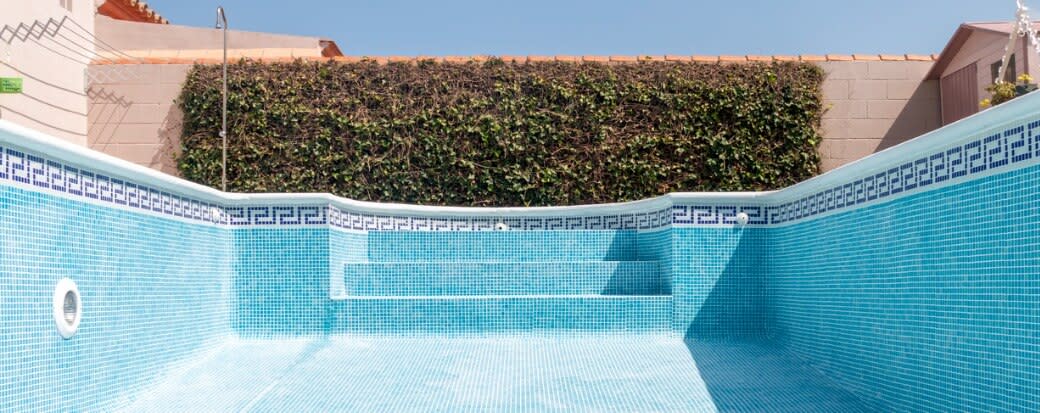Pool Resurfacing Costs in 2024

Share this article:
Editor’s note: Lantern by SoFi seeks to provide content that is objective, independent, and accurate. Writers are separate from our business operation and do not receive direct compensation from advertisers or network providers. Read more about our Editorial Guidelines and How We Make Money.
What Is Pool Resurfacing?
Draining the pool and allowing it to dry completely. Many people rent sump pumps to get the job done quickly. Preparing the surface. This includes removal of all leaves, dirt, and other debris. To ensure all residue is removed, a pressure washer, chemical treatment, or sandblaster may be required. Patching the cracks. Before priming, any cracks or holes must be filled with underwater pool patching. Priming the surface with the appropriate type of pool epoxy. Painting the surface. Once the primer is dry, a topcoat epoxy or resurfacing solution is applied. Most pools need between three to four coats, with sanding required in between each. Refilling the pool. After the last layer of epoxy, you can refill your pool after letting it dry, which takes about 5 to 7 days.
Why Is Pool Resurfacing Necessary?
Pool Resurfacing Cost
Factors Impacting Pool Resurfacing Cost
Pool size Type of pool Materials used Finish type Painting Labor
Does the Cost of Different Pool Resurfacing Types Vary?
Above-Ground Resurfacing Cost
In-Ground Resurfacing Cost
Vinyl Liner Pool Resurfacing Cost
Fiberglass Pool Resurfacing Cost
Tile Aggregate Paint
Concrete Pool Resurfacing Cost
The Takeaway
Frequently Asked Questions
Photo credit: iStock/juanorihuela
LNTPL-Q424-009
About the Author
Emily Greenhill Pierce has been a writer in the areas of finance, lifestyle, travel, and health for over 15 years, contributing online content to Lantern, Google, and Frommer’s Travel Guides. She holds degrees from Emerson College and Fairleigh Dickinson University, including an MFA in Creative Writing for Young Adults and Children. She has authored two middle grade books.
Share this article: